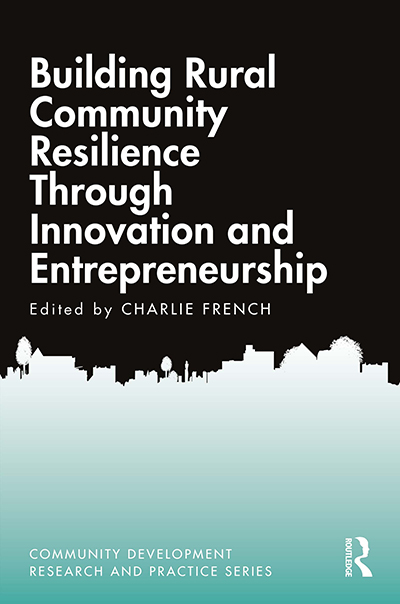
New Book by UNH Extension Authors Dispels the Myth that Rural Places Don’t Innovate
Twenty-six leading community development scholars and practitioners from around the country—including over a dozen collaborators in the Northeast Region—teamed up to publish a new book that explores how innovation manifests itself in rural places and ultimately contributes to entrepreneurial development and community resilience. The book was edited by Dr. Charlie French, program leader and Extension associate professor of community and economic development at the University of New Hampshire. Funding to support this effort was provided by the Northeast Regional Center for Rural Development.
Collaborators from the Northeast Region include Charlie French, Stephan Goetz, Ted Alter, Devon Meadowcroft, Yicheol Han, Doug Arbogast, Dan Eades, Sarah Rocker, Shannon Rogers, Molly Donovan, Casey Porter, Jared Reynolds, and Geoff Sewake.
Much attention has been placed on how metropolitan areas innovate, but relatively little work has been done to explore innovation in rural places, including New Hampshire. That is because the common measures of innovation—the number of startups, patents, and R&D activity; access to venture capital; density of technology firms; and the number of stem degree holders—are biased towards more urban places with high concentrations of businesses, institutions, and capital. The book’s authors set out to demonstrate that rural places do innovate, albeit what that innovation looks like may differ significantly from more metropolitan areas. Innovation in rural places may be the result of new forms of collaboration; programs that leverage rural assets to address critical service gaps; novel strategies for accessing financial capital; or the infusion of arts into aspects of community life.
Innovation has been critical to the resiliency of rural places throughout history, particularly over the past two years of the pandemic. Learn how rural places around the country and the world have innovated and adapted to meet current challenges and foster vibrant businesses and local economies in Building Rural Community Resilience Through Innovation and Entrepreneurship. More information about the book can be found online here.
